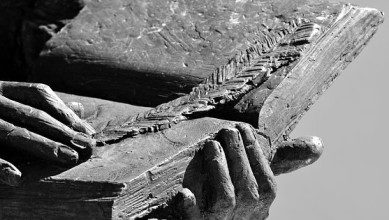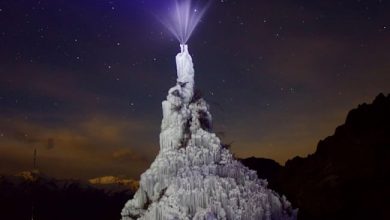Death by Landscape is a short story written by Margaret Atwood which is part of her collection of short stories titled “Wilderness Tips,” which was published in 1991. “Death by Landscape” is considered one of Atwood’s standout works, showcasing her ability to create rich and compelling narratives that explore the human condition.
Death by Landscape | Summary
“Death by Landscape,” tells the haunting and poignant tale of Lois, a woman haunted by memories of her past and a mysterious disappearance in the Canadian wilderness. The story opens with Lois, a middle-aged, lonely artist who reminisces about her childhood experiences at a summer camp called “Camp Manitou,” nestled in the beautiful yet eerie wilderness of Northern Ontario. Lois’s parents were not affluent, but they were able to send her to Camp Manitou for a few weeks each summer, where she made lifelong friends and discovered her love of painting. Lois became roommates with Lucy, a bold and brave girl from an affluent family, one summer when she was approximately thirteen years old. Lois was both captivated and terrified by Lucy’s boldness, and the two created an odd yet intimate friendship.
The ladies spent their days at camp participating in numerous outdoor activities such as canoeing, hiking, and exploring the huge, untamed countryside. They were divided into groups headed by camp counselors, and Lois was matched with an intriguing counselor named Miss Adler one day. Miss Adler was an unusual and enigmatic woman who seemed to have a deep connection with the outdoors and an incredible ability to smoothly navigate through impenetrable woodlands. Miss Adler took Lois, Lucy, and a few others on a canoe excursion one day. They stumbled upon a set of paintings on the rocks produced by an unknown artist during their journey. Lois was attracted by the paintings, which represented landscapes from the forest. Miss Adler advised the girls not to get lost in the woods since it had a reputation for consuming people whole.
As the canoe trip progressed, Lucy playfully taunted Lois about her artistic ambitions, even going so far as to accuse Lois of having a crush on Miss Adler. The tension between the two girls escalated, and during a moment when Lois was separated from the group, she felt an inexplicable fear and vulnerability, sensing the vastness and isolation of the wilderness. The group decided to go on an excursion guided by Miss Adler soon after this happened. Lucy decided to go ahead at one point, daring Lois to catch up. Lois saw Lucy standing on the edge of a precipice, appearing lost in meditation, when she caught up with her. Lois would never see her friend alive again. Lucy’s hat was blown off by a tremendous blast of wind, and when she reached out to recover it, she vanished without a trace.
Lucy’s disappearance shook the entire camp. Search crews combed the forest for any trace of her, but no sign of her was ever discovered. The loss had a particularly strong impact on Lois as she was plagued with guilt and sadness.
The narrative then switches to the present, with Lois reflecting on her life as an artist and the influence Lucy’s absence has had on her work. She has become known for her landscape paintings, with a particular focus on wilderness scenes. However, her paintings always seem to include a hidden figure, blending into the landscape as if lost in the wilderness. As the years pass, Lois’s parents die, and she sells their house, leading her to dispose of various belongings, including the paintings she had created during her time at Camp Manitou. She keeps one painting, a landscape with a faint silhouette of Lucy standing at the edge of a cliff. This painting becomes a haunting reminder of her lost friend and the unresolved guilt she carries.
In her apartment in Toronto, Lois befriends another woman, an art collector named Grace. Grace often comes to Lois’s place for drinks and conversation. One evening, while they are chatting, Grace notices the painting and enquires about the figure in the landscape. Lois recounts the story of Lucy’s disappearance, feeling compelled to share her burden with someone after years of keeping it locked inside. Grace seems intrigued by the story and suggests that perhaps Lucy ran away intentionally, escaping from her privileged yet suffocating life. Lois is hesitant to accept this possibility, as she clings to the belief that Lucy was swallowed by the wilderness itself. Grace then leaves, and Lois is left alone with her memories and unresolved emotions.
The story concludes with Lois visiting a new exhibit featuring her landscape paintings, including the one with Lucy’s faint silhouette. As she observes the visitors interacting with her art, she wonders if any of them can sense the hidden figure within the wilderness, the lost girl who became a part of the landscape forever.
Death by Landscape | Analysis
“Death by Landscape” is a compelling and thought-provoking short story that showcases Margaret Atwood’s mastery of exploring complex emotions and the human psyche. Atwood’s use of vivid imagery and seamless transitions between past and present allows the reader to immerse themselves fully into Lois’s world, experiencing her emotions firsthand. One of the standout aspects of the story is Atwood’s portrayal of the wilderness as a powerful, almost sentient force that engulfs and absorbs people who dare to venture into its depths. The wilderness serves as a metaphor for the unknown, the uncontrollable, and the unresolved aspects of life. Miss Adler, the enigmatic camp counselor, becomes the embodiment of the wilderness, with her intimate knowledge of the land and the secrets it holds. Her warnings to the girls about the wilderness’s history of “swallowing people whole” foreshadow the disappearance of Lucy and add an eerie and mysterious element to the narrative.
The character of Lois is exceptionally well-crafted, with her complex mix of emotions and psychological turmoil. The unresolved trauma of Lucy’s disappearance manifests itself in Lois’s art, where she consistently includes a hidden figure within her landscape paintings. This artistic expression serves as a coping mechanism for Lois, allowing her to grapple with the past and keep Lucy’s memory alive. Atwood’s exploration of the theme of guilt is particularly poignant. Lois carries the weight of survivor’s guilt, feeling responsible for not being able to save her friend. It also invites readers to reflect on how one event can shape an entire existence and influence the choices we make.
Another notable element of “Death by Landscape” is Atwood’s ability to evoke a sense of nostalgia and longing for the past. Through the flashback sequences at Camp Manitou, the reader is transported to the carefree days of Lois’s childhood, where friendships were forged, and the wilderness was both a place of wonder and fear. The vivid descriptions of the Canadian landscape, coupled with the intimate portrayal of the characters’ emotions, create a deeply immersive reading experience. The open-ended conclusion of the story adds to its haunting nature. Atwood’s decision to leave certain aspects of the story ambiguous encourages readers to reflect on the complexities of human emotions and the unreliability of memory.
Death by Landscape | Themes
The plot revolves around the woods and the untamed natural world. Atwood dives into the wilderness’s force and mystery, utilising it as a metaphor for the unknown and uncontrolled parts of existence. The Canadian environment provides a disturbing and intriguing background that impacts the experiences and feelings of the individuals.
Memory and its impact on individuals are significant themes in the story. Lois’s memories of her time at Camp Manitou and Lucy’s disappearance haunt her throughout her life. The traumatic event of Lucy’s vanishing becomes a pivotal moment that shapes Lois’s identity, influencing her artistic work and emotional state.
Artistic expression is a significant theme in the story. Lois’s landscape paintings serve as a means for her to cope with her emotions and traumatic memories. Through her art, she attempts to preserve the memory of Lucy and the wilderness that continues to haunt her.
The story explores how significant events can shape an individual’s identity and sense of self. Lois’s experiences at Camp Manitou and Lucy’s disappearance become defining moments in her life, influencing her choices, relationships, and emotional state.
Atwood leaves certain aspects of the story open to interpretation, inviting readers to engage actively with the narrative and draw their own conclusions. The ambiguity surrounding Lucy’s fate and the hidden figure in Lois’s paintings adds layers of complexity to the themes of memory, guilt, and loss.
The contrast between the wilderness and the urban setting of Toronto also serves as a thematic element. The story explores the tension between the natural world and the civilized, ordered society, and how individuals are shaped by their experiences in both environments.
Death by Landscape | Title
At first glance, the title appears to refer to the mysterious disappearance of Lucy during the hiking trip in the Canadian wilderness. The literal meaning suggests that Lucy met her fate through some tragic incident in the landscape. However, the title also carries symbolic weight, representing the broader theme of how the wilderness, the untamed and unpredictable natural world, can have an unprecedented impact on human lives.
The title places a strong emphasis on the wilderness itself, making it a prominent element of the narrative. This unique aspect sets “Death by Landscape” apart from conventional stories and allows Atwood to delve deeply into the psychological and emotional impact of the environment on the characters’ lives. The title also alludes to the psychological impact of the wilderness on the characters, particularly on Lois. For her, the wilderness becomes a haunting presence, forever tied to the disappearance of her friend Lucy. Lois’s guilt and grief are intertwined with her memories of the wilderness, blurring the lines between reality and imagination.



